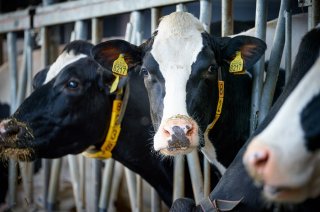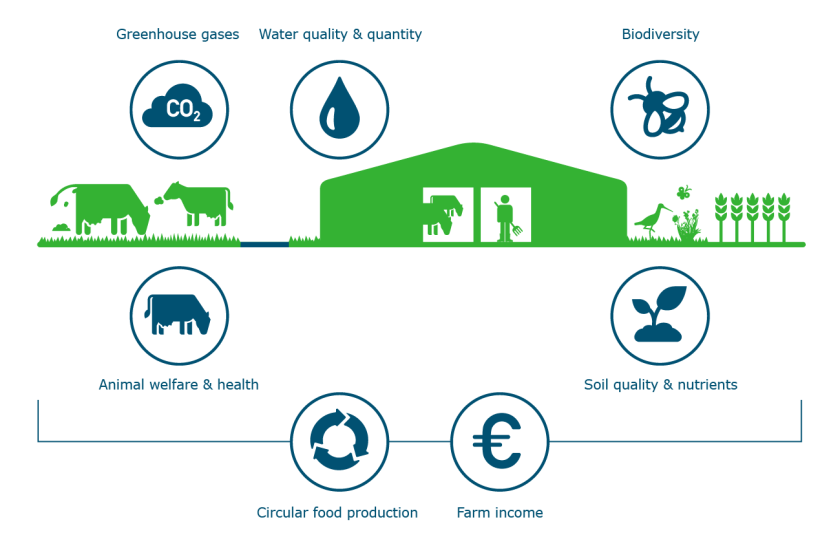
Dossier
Working towards sustainable dairy production
Dairy processors worldwide are aware of the impact of sustainability on the dairy sector. The sector contributes to nutritious and healthy diets, but at the same time it has impact on climate change, animal welfare, biodiversity and soil fertility. Wageningen University & Research (WUR) develops, applies and disseminates new working methods that contribute to sustainable dairy farming.
Improving sustainability
What is needed to improve sustainability in the dairy chain? Which practices are available for different farm types? And how can we ensure that these practices are really implemented by the farmers? Together with partners, WUR studies these key questions and collaborates with the dairy industry on implementing the answers.


1. Greenhouse gases
Dairy farms emit greenhouse gases and this has impact on climate change. The reduction of emissions on dairy farms focuses on methane (CH4) and nitrous oxide (N2O) and to a lesser extent on carbon dioxide (CO2). Feeding and manure management offer opportunities for reduction. Farms can also contribute to the reduction of greenhouse gasses in the air by taking measures that sequester carbon in soils through the increase of the soil organic matter.
Download:

2. Soil quality & nutrients
Improving soil quality focuses on optimal crop yields combined with adding to soil ecosystem functions such as water regulation, nutrient cycling and soil microbial and plant biodiversity. Nutrient application will be adapted to minimise nutrient losses such as nitrogen and phosphorus to water and air. Sequestration of carbon in soils is an important measure to improve soil quality and to contribute to the reduction of greenhouse gasses in the air.

3. Biodiversity
Land use for growing dairy cattle feed will impact local and global biodiversity. Developing best practices that contribute to biodiversity is an emerging topic in dairy research. Examples of these practices are: the reduction of emissions that are harmful to nature, less use of biocides, and less use of soy from areas at risk of deforestation. Collaboration with nature conservation organisations, landscape restoration and protection of rare species also contribute.

4. Water quality & quantity
Water can have many roles on the farm: facilitate growth of crops, drinking water for animals and use for cleaning. Minimising the impact of the farm on the quality of surface and ground water is the first sustainable objective. This is connected to the use of fertiliser, manure, biocides and other types of water contamination. The second one is to use water efficient, both for crop and for milk production.

5. Animal welfare & health
Creating conditions to enable normal patterns of animal behaviour by adjustments of housing and application of grazing will have a positive impact on welfare and health. The introduction of measurements on animals to monitor animal welfare is an important field of research to better understand welfare and discomfort. Feet and legs, mastitis and heat stress are important issues that require further improvement to increase animal welfare.

6. Circular food production
The aim of a circular food system is to optimize the use of available biomass resources in the world. One of the goals in this circular approach is to avoid the use of human-edible biomass (such as grains and pulses) as food source for animals. This would contribute to the world food security. The challenge for the dairy sector is to reconsider the position of the dairy cow in a circular food system. Future feed rations should focus more on residuals from plant production and by products from the food industry.
Download:

7. Rural livelihoods
The dairy sector contributes to the economic viability and resilience of many rural communities and to supplying nutritious food in many countries. Building stronger dairy chains responding to market needs and securing safe and nutritious dairy foods are crucial goals in dairy development. Incorporating sustainability themes including the optimal use of land resources are important aspects to build strong international dairy chains that contribute to economic growth.
